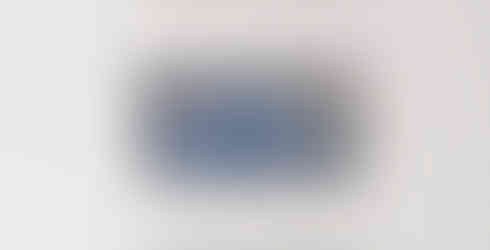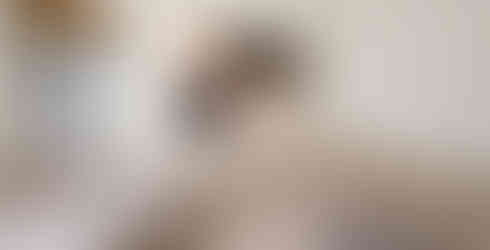Childhood; between the dark and the idyllic: 'Infinita infanzia' at Palazzo Collicola review by Gertrude Gibbons
- gertrudelmgibbons
- May 26, 2024
- 7 min read
Infinita infanzia at Palazzo Collicola, Spoleto, Italy
23rd March 2024 - 9th June 2024
Curated by Saverio Verini
Infinita infanzia is a group exhibition which immerses visitors through the voices, spaces and connotations of childhood. It creates a stimulating journey through the rooms of the museum that is caught and held in tension between the dark and the idyllic. A group show of twenty three artists (mostly Italian living artists), crossing generations and mediums, the exhibition considers childhood in its universality and as a multifarious concept where no two experiences are the same.

Installation view of Infinita Infanzia at Palazzo Collicola, Spoleto, 2024. Centre: Cesare Pietroiusti, “Pinocchio” nuovo con gomma, Trieste Zona A, 1954, 25 Lire, rosa carminio sovrastampato I-II-III-IV-V-VI, 2022. Courtesy the artist and Gallery Apart, Rome. Right: Andrea Salvino. Pinocchio, 2021. Collection Flaminia Cerasi. Photo: Giuliano Vaccai.
To respond to an exhibition grappling with the idea of childhood, I find it difficult not to impose or project my own experiences of childhood. Travelling through the show, I felt a sense of heightened emotions which varied distinctly from room to room and work to work, with some provoking memories and sensations that I could perhaps relate to and others that I felt pushed against my experiences. In this way, the exhibition contains a natural intimacy and introspection that is at the same time framed in the shared experience of the exhibition space. It evokes a kind of exposure of this process of introspection, of looking inside and presenting it outside.
The age range, years, of this stage of life is not specified in the exhibition. Left ambiguous, this emphasises the exhibition's exploration of the imagined concept of childhood rather than a concrete biological or psychological period. There is no singular or definitive childhood; it is a subjective experience that appears to subsequently get assessed and framed by the society the adult grows into. This ambiguity over when and where childhood might be located, encourages the question as to whether this period of life is fixed or ever-changing. How does an adult look back at childhood? What place does childhood have in the making of art? Where does the child reside in the art world?

Vedovamazzei, Early Works (Raffaello all’età di 7 anni), 2021, Stick oil pastels and acrylic on canvas, 290 x 335 cm, 2021. Courtesy Vedovamazzei and Magazzino, Rome. Photo: Giuliano Vaccai.

Luca Bertolo, Il fiore di Anna #2, 2019, Oil and crayon on canvas, 200 x 250 cm. Courtesy the artist and SpazioA, Pistoia. Photo: Giuliano Vaccai.
It takes the visitor on a journey paralleled to a story. The first room, titled 'Prologue', usually used for the introductory part of a book, gives the impression that the visitor is entering a tale. I recall Disney films, like Snow White and the Seven Dwarfs (1937), Pinocchio (1940) and Cinderella (1950), that begin with a book being opened, the 'once upon a time', leading the viewer into the pages of the book which become the immersed world of the film. This first room proposes a consideration of perspective: with a large work, the viewer is made to feel small. It is a work by the artists' collective Vedovamazzei of a child's drawing Early Works (Raffaello all'età di 7 anni) (2021) copying Raphael's Portrait of Young Woman with Unicorn (c.1505-06), introducing an exchange between the worlds and perspectives of child and adult. The last room of the exhibition, continuing with the sense of a book, is titled 'Epilogue' and includes the imitation of a child's drawing by an adult by Luca Bertolo Il fiore di Anna #2 (2019). In this way, the artwork appears a point of intersection in the exchange between child and adult interpretations of art, creativity and each other. This story through the journey of the group exhibition is inevitably not a story of a singular voice, but is made up of a tapestry of voices; it is a polyphonic narrative.
Installation view of Infinita Infanzia at Palazzo Collicola, Spoleto, 2024. Front: Alexander Calder, Standing Mobile, 1974. Collection Galleria d’Arte Moderna “G. Carandente”. Back left to right: Adelaide Cioni, Bozzetto per il mare, 2019 and Cerchi gialli, 2021; Posizioni di volo, 202. Courtesy the artist and P420, Bologna. Photos: Giuliano Vaccai.
The journey through the ground floor spaces of the Palazzo Collicola takes the visitor on a circular walk from room to room, each exploring a separate element which intersects with the adjoining rooms. The works are displayed with sensitivity to the place and architecture of the Palazzo Collicola, and its unique textures, bringing out affinities of the works with each other and with the space. The third room 'Elementary Complexity' considers the possibility of basic forms to evoke complexity. Here there a sense of stillness awaiting movement in the works by Alexander Calder and Adelaide Cioni, which also share an affinity of colours. Calder's mobile moves subtly in the flow of air, so that it might never be seen from the same angle twice. Cioni's stitched fabric Posizioni di volo (2021) appears to frame a bird in flight, the stitches almost invisible such that the bird feels tied by an illusion. In the following room, titled 'The Attendance Register', exploring school, rules and rebellion, the work of Maurizio Cattelan Punizioni (1991) is placed centrally between two windows, below the palimpsestic wall with traces of lines and patterns from an earlier period. The lines of the paper, and their varying shades of yellow complement this space. There is also a subtle reference to Spoleto in Tomaso Binga's work Alfabeto Pop / Chiesa (1977), a drawing of the cathedral covered by letters reminiscent of a text for learning how to spell, rooting it to the location.
Slideshow (1-5): (1) Installation view of Infinita Infanzia at Palazzo Collicola, Spoleto, 2024. Left to right: Riccardo Baruzzi, Abaco, 2018. Courtesy the artist and P420, Bologna; Filippo Berta, Happens Everyday, 2012. Courtesy the artist and Prometeo gallery Ida Pisani; Tomaso Binga, Alfabeto Pop series, 1977, Courtesy the artist and Erica Ravenna Gallery; Maurizio Cattelan, Punizioni, 1991. Private collection, Florence. Courtesy Tornabuoni Arte. (2) Maurizio Cattelan, Punizioni, 1991. Mixed media on 30 sheets of paper, 204 x 204 x 6 cm. (3) Installation view left to right: Filippo Berta, Happens Everyday, 2012; (visible through door: Namsal Siedlecki and Myriam Laplante, see below); Binga. (4) Binga. Alfabeto Pop / Casa and Alfabeto Pop / Chiesa, 1977, Collage on pre-printed cardboard, 39 x 26 cm. Courtesy the artist and Erica Ravenna Gallery. (5) Simona Weller, Senza Titolo, Mixed media on canvas, 15 x 30 cm, 1973-4. Courtesy the artist and Erica Ravenna Gallery. Photos: Giuliano Vaccai.
The idea of storytelling and the place of the story within this journey of the exhibition begins to appear in a room dedicated to Pinocchio. This features an captivating story on film by Cesare Pietroiusti, of a stamp and making a work from this stamp and story, interweaving its monetary and artistic value, and tying the process of making to the process of storytelling. In the room's contemplation of Pinocchio, the space raises the power of the imagination to create and give life, to animate toys and objects and put them in motion. The idea of the game and of play, is significant throughout the exhibition, offering the possibility of game as a form of universal language. Further on, in a completely darkened room, a film by Diego Marcon, Ludwig (2018), with haunting music that plays on repeat, prompting a sense of vertigo and disorientation, I felt a toying between dark humour and tragedy that children's animated films can contain and might only be fully recognised in adulthood. In another room, Linda Fregni Nagler's haunting series of photographs Hidden Mother (2013) reminds the visitor of the exhibition as an intersection in the exchange between adult and child worlds, as they depict children being held or propped by the hands of faceless adults that attempt to remain hidden and erase their presence and make the child the central subject.
During the exhibition's duration, there was a performance by one of the artists, Myriam Laplante, which animated the work is a disturbing mode of play. It evokes, with humour, the scariness of fairy tales, which perhaps try to warn children how to behave. Laplante's piece Lupas in Fabula (2005-24) consists of wild-looking bears on the floor with swollen stomachs, and in her performance, Laplante transformed these animals, through an intensive metamorphosis, into items of domestic furniture. This room also contains work by Mattia Pajè, including Un giorno tutto questo sarà tuo (2019) showing a sleeping baby, juxtaposed by large black circles, perhaps evoking a vulnerability of childhood, and mystery about it.
In the polyphony of voices, crossing between the conscious and subconscious, darkness and delight, the exhibition creates a narrative through the complex concept of childhood; at the same time, it weaves the spaces of the museum in with these works, which push and pull each other in a play of tensions and affinities.
Slideshow (6-14): (6) Installation view of Infinita Infanzia at Palazzo Collicola, Spoleto, 2024. Foreground: Myriam Laplante Lupus in Fabula, 2005-2024. Courtesy the artist; background: Mattia Pajè, Un giorno tutto questo sarà tuo, 2019. Courtesy the artist. (7) Installation view, left to right: Luigi Ontani, Pinocchio, 1972. Private collection. Courtesy L’Attico and Fabio Sargentini; Marta Roberti, Autoritratto come Pinocchio, 2024. Courtesy the artist and z2o Sara Zanin. (8) Diego Marcon, Ludwig, 2018, Video, CGI animation, color, sound, loop. Courtesy: the artist and Sadie Cole HQ, London. (9, 10) Linda Fregni Nagler, The Hidden Mother, 2013, 5 platinum palladium print on cotton paper, each 51 x 39 cm. Courtesy the artist and Galleria Monica De Cardenas, Milan. (11) Installation view, foreground: Namsal Siedlecki, Group Show, 2014-2024. Courtesy the artist and Magazzino, Rome; background: Carol Rama, Dorina, 1946. Private collection, Turin. (12) Francesca Grilli, Sparks, 2021. Courtesy the artist and Galleria Umberto Di Marino, Naples. (13) Calixto Ramírez, Tana libera tutti!, 2016. Courtesy the artist and Galleria Alessandra Bonomo. (14) Installation view, foreground: Elena Bellantoni, CeMento, 2019. Courtesy the artist; background: Thomas Braida, Sculturine, 2014 - 2024 and Tassidermia in festa, 2011. Courtesy the artist and and Monitor, Rome, Lisbon, Pereto. Photos: Giuliano Vaccai.

































Comments